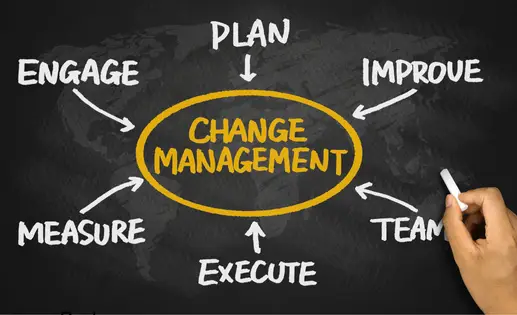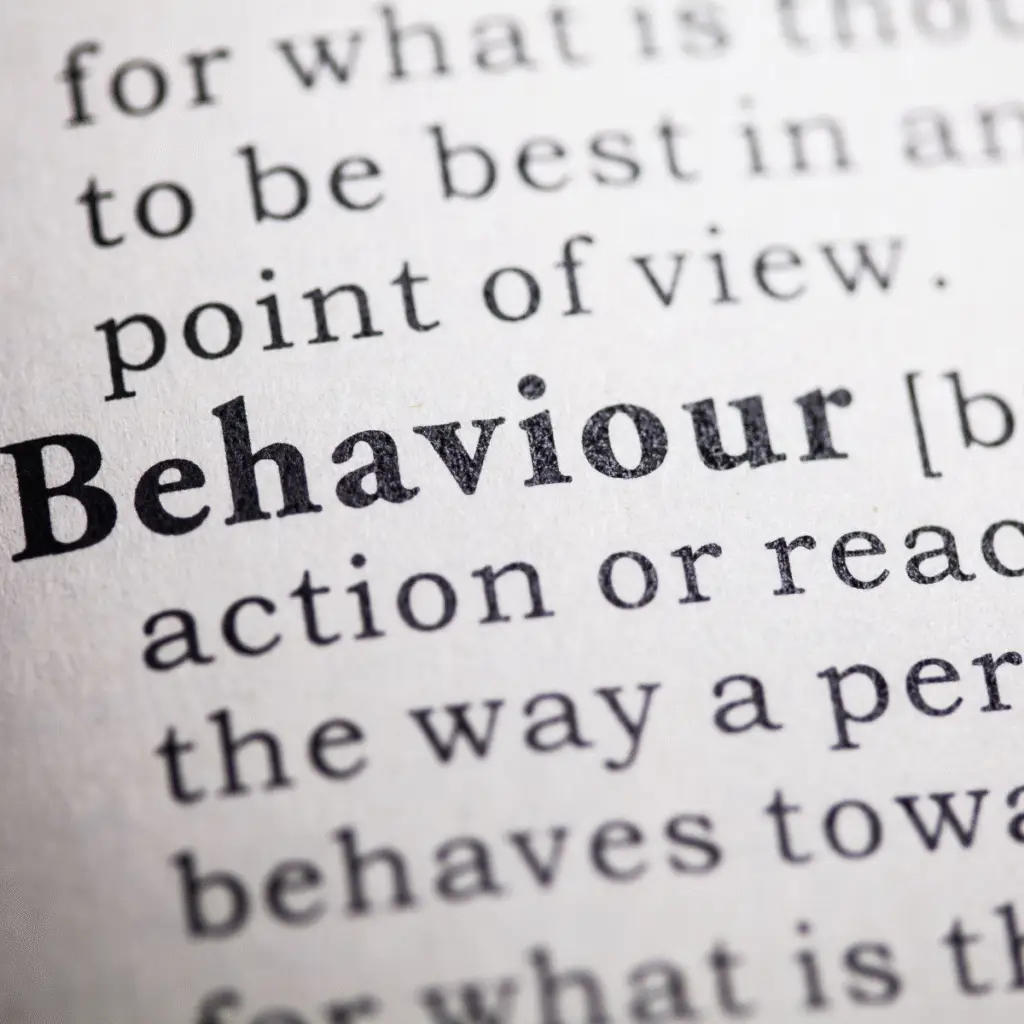What is Change Management?

Change management is about helping people adjust when the way they work shifts, whether through new systems, processes, or rules. Too often, organisations focus on technology and procedures while overlooking the people who need to adapt. When employees are not supported, resistance grows, morale drops, and projects stall. At Enable Change Partners, we focus on every dimension of change: social, behavioural, emotional, physical, and technical. By training staff, coaching leaders, and providing ongoing support, we help organisations of any size embed new ways of working smoothly. The result is faster adoption, reduced resistance, and employees who feel engaged, valued, and capable of thriving in the future.
Beyond Checklists: Measuring Behaviour in Change

Measuring change goes beyond counting training attendance, survey responses, or e-learning completions. These numbers show participation, not whether people are working differently. Real insight comes from behavioural measurements, the observable actions that signal change is taking hold. Whether it is managers approving timesheets in a new system, employees creating guides to help colleagues, or teams starting meetings with new priorities, these small shifts reveal adoption in action. By defining success in behavioural terms, creating safe ways to observe, and using those insights to guide conversations, organisations gain a clearer view of progress. Behavioural measures uncover whether new ways of working are embedded, highlight early warning signs, and demonstrate the real value of change.
Balancing Speed with Stability in Change

When disruption becomes the norm, speed feels like the only answer. New technologies, shifting markets, and tighter budgets push leaders to deliver results almost overnight.
But moving too fast without the right structures comes at a cost. Engagement drops, accountability blurs, communication falters, and resistance builds. What starts as urgency can quickly stall into rework and frustration.
That is why guardrails matter. At Enable Change Partners, we see them not as brakes, but as enablers. Experienced Change Managers provide these safeguards. They help leaders set the right pace, reduce risks, and keep people engaged so transformation delivers without breaking the business.
At ECP, we are often called the guardians of momentum. We help organisations move at the pace they need, while keeping change human, resilient, and sustainable.
8 Essential Steps to Humanise Organisational Change

Organisational change succeeds when it is humanised. Too often, change efforts focus on processes and structures while overlooking the people who bring them to life. Employees are not just resources; they are individuals with hopes, fears, and valuable insights. Involving them early, listening with intent, communicating with clarity, and creating safe spaces for honest feedback fosters trust and engagement. When people feel valued and supported, resistance turns into advocacy and compliance becomes genuine enthusiasm. By equipping teams with the right tools, empowering leaders to show empathy, and building a culture of adaptability, organisations can transform change from a top-down mandate into a shared journey of growth and innovation.
What’s the True Cost of Fast-Tracked Change?

Rushing change may deliver quick wins, but it often comes at a hidden cost to employees’ well-being, psychological safety, and long-term morale. Without a clear strategy and a focus on people, rapid change can lead to stress, burnout, and resistance that undermine adoption and productivity. Successful transformation requires balance: a clear vision, strong stakeholder engagement, expert guidance, and a people-centred approach that supports resilience. When change is thoughtful and inclusive, organisations achieve both speed and sustainability, creating lasting agility without sacrificing their people in the process.
The Journey to Change Adoption: Lessons from a 3-Year-Old’s First Pedal Bike Experience

Adoption is not just about the end goal but the journey that leads to it. Watching my three-year-old daughter progress from a balance bike to her first pedal bike reminded me how important strong foundations are in change. She learned step by step, practising balance, steering, and braking, so when the time came, she rode with confidence and joy. Organisations face the same reality: by providing training, introducing challenges gradually, and creating supportive environments, teams are better prepared to embrace change. Successful adoption happens when people feel equipped, supported, and ready to succeed.
Making Change Simple: A Pathway to Success with Enable Change Partners

Change is constant in today’s workplaces, yet many organisations still struggle to manage it effectively. At Enable Change Partners, we believe that simplifying change is essential to delivering successful business transformation. Our approach emphasises clear communication, inclusive involvement, training and support, celebrating progress, and continuous feedback. One powerful enabler of this is role architecture, a framework that standardises job titles, aligns roles with market benchmarks, and organises them into job families. This creates clarity, supports career development, and reduces overlap while ensuring roles reflect evolving ways of working. When combined with change management practices such as stakeholder engagement, training, and reinforcement, role architecture becomes more than an HR tool. It becomes a driver of clarity, agility, and alignment, helping organisations and employees navigate transformation with confidence.
Understanding Your Stakeholders: Mastering the Art of Stakeholder Mapping

Successful change depends on people as much as strategy, and strong stakeholder engagement is central to every transformation. Stakeholder mapping is a powerful tool that helps organisations identify, analyse, and manage the individuals and groups who influence projects. By clarifying roles, interests, and power dynamics, it ensures no key voices are overlooked and that communication is timely and effective. Used throughout the change journey, stakeholder mapping enhances engagement, supports informed decision-making, prevents conflict, and fosters collaboration. Whether applied through traditional methods or visual tools like Google My Maps, it provides the insight needed to guide organisations through change with confidence and clarity.
Are Your Communication strategies Falling Short?

Effective communication is the backbone of successful change, but traditional methods often fall flat and disengage stakeholders. To truly connect with people, organisations need fresh, innovative approaches that capture attention and inspire participation. Out-of-the-box strategies such as visual storytelling, gamification, peer-to-peer sharing, immersive VR and AR experiences, interactive webinars, podcasts, and creative campaigns can transform how messages are delivered and received. These approaches make communication more engaging, relatable, and memorable, while also giving employees space to share feedback and stories of their own. By embracing these techniques, organisations not only strengthen engagement but also build a culture of openness, collaboration, and enthusiasm for change.
WHEN IS THE RIGHT TIME TO INVOLVE CHANGE MANAGEMENT IN YOUR PROGRAM?

Change is inevitable in any organisation, and managing it effectively can be the difference between success and failure. While technology and processes are often the focus, it is the people who ultimately determine whether change takes hold. Involving change management from the very beginning of a program enables proactive stakeholder engagement, strengthens the business case, informs resource planning, shapes training and support, and significantly increases adoption and success rates. Research shows that early involvement not only boosts employee readiness but also delivers a strong return on investment. In contrast, bringing change management in late often shifts the focus to crisis management, fuels resistance, limits impact assessments, and adds unnecessary costs. Although it is never too late to introduce change management, early integration ensures smoother transitions, stronger engagement, and more sustainable outcomes. By treating change management as a strategic enabler rather than a last-minute fix, organisations can empower people, reduce risks, and realise the full benefits of transformation.
